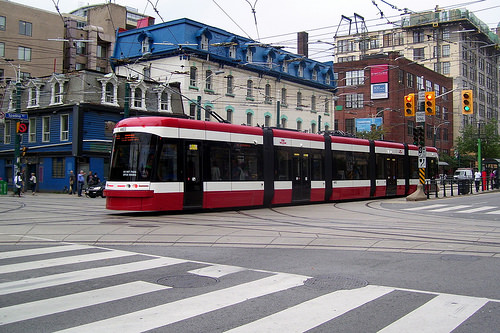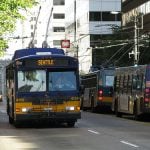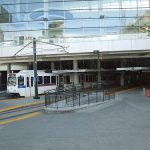New transit models account for both passenger comfort and profit maximization
Just how comfortable and costly public transit service is has a lot to do with both vehicle capacity and frequency, according to a study published by Elsevier and written by Avi Herbon and Yuval Hadas of Bar-Ilan University in Israel. Happily for transit aficionados and urban planners alike, the study, Determining optimal frequency and vehicle capacity for public transit routes: A generalized newsvendor model, isn’t as complicated as its title might suggest — instead, it aims to solve complex transit problems with a new approach to the math.

A new approach to transit modelling incorporates both passenger priorities and operators’ profit maximizing needs using a newsvendor model. Image from bobolink.
As the study’s authors point out, passengers and operators have are interested in different factors when it comes to measuring transit efficiency. “From the passenger perspective, waiting and overcrowding costs are used; from the operator’s perspective, the costs are related to vehicle size, empty seats, and lost sales.” The newsvendor is a type of mathematical model that, when applied to public transit, boasts a few major benefits in terms of reducing and addressing costs (such as costs that are impacted by overcrowding or by empty seats on public transportation).
Common public transit planning models are based on determining service frequency based on hourly passenger rates, average travel time, vehicle capacity, and desired occupancy, among other factors. While passengers are often most concerned with comfort, accurate timetables, and available seating, transit operators are more interested in bringing in as “much profit as possible.” Though these objectives might seem at odds, the study notes that any decisions made by the operator should account for customer opinion, or else risk losing out to competitive transit providers.
Drawing on both previous transit research and relatively recent technology — such as how automatic vehicle location technology and passenger counting can track vehicles and collect data on passengers entering and leaving trains at certain stops — the study highlights a selection of equations designed to better calculate the best frequency and prime capacity for public transit vehicles.
In the proposed model, optimal frequency and vehicle size are both considered, as are passenger waiting and overcrowding. The model even considers whether passengers will board an overcrowded train or decide to wait for the next one. The result? By using their analytical model, the authors show that by including some considerations and eliminating others — such as detailed information regarding boarding transit — reaching optimal costs for transit operators and lowering waiting time for passengers aren’t “necessarily contradicting goals.” In fact, these goals may be reached together. Flexible cost and what the route itself looks like also impact transit efficiency.
Interested in learning more? The study, which was published in Transportation Research Part B: Methodological this month, is available online here for purchase. You can also learn more about Bar-Ilan University’s Department of Management.
Related Posts
Category: Transportation

















